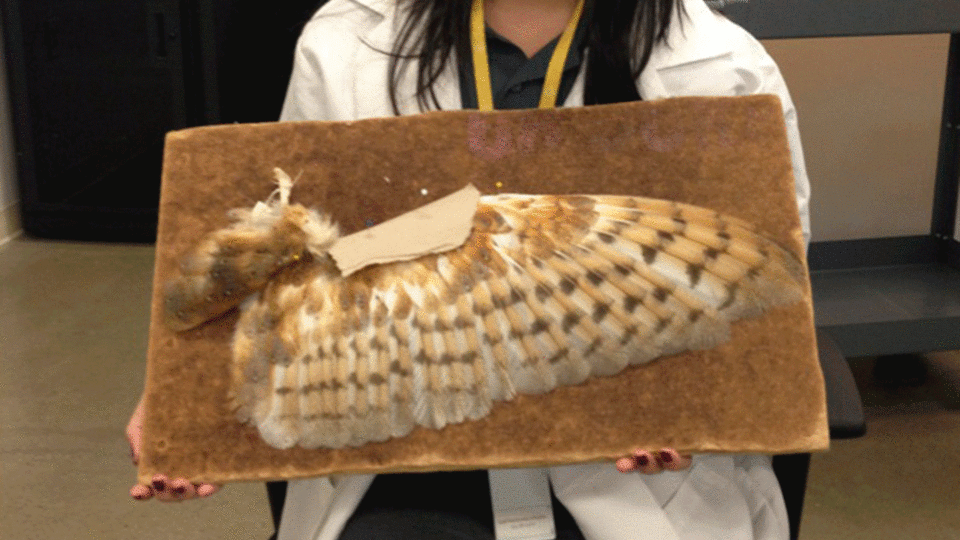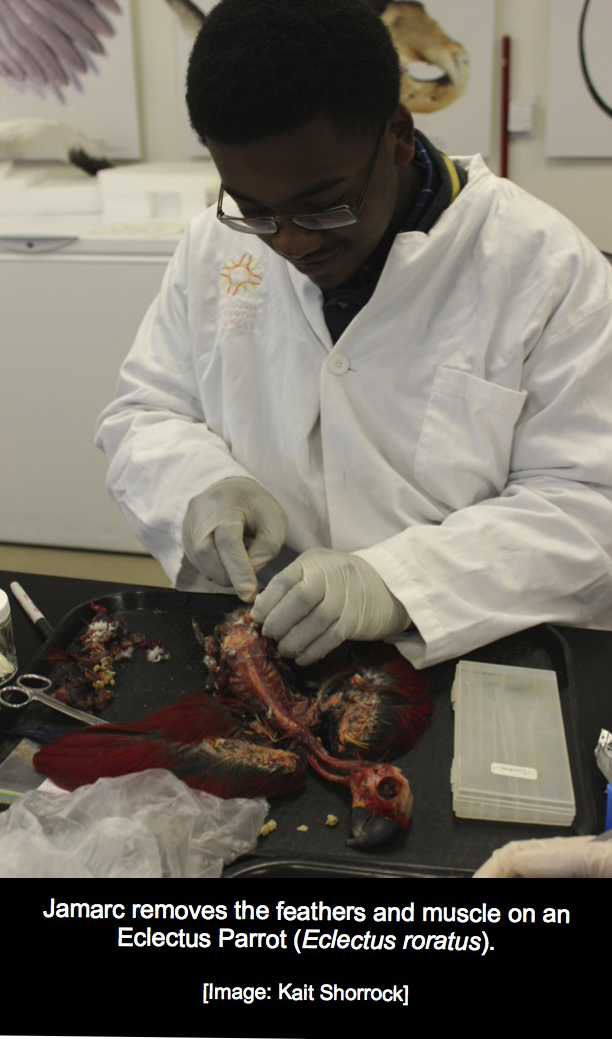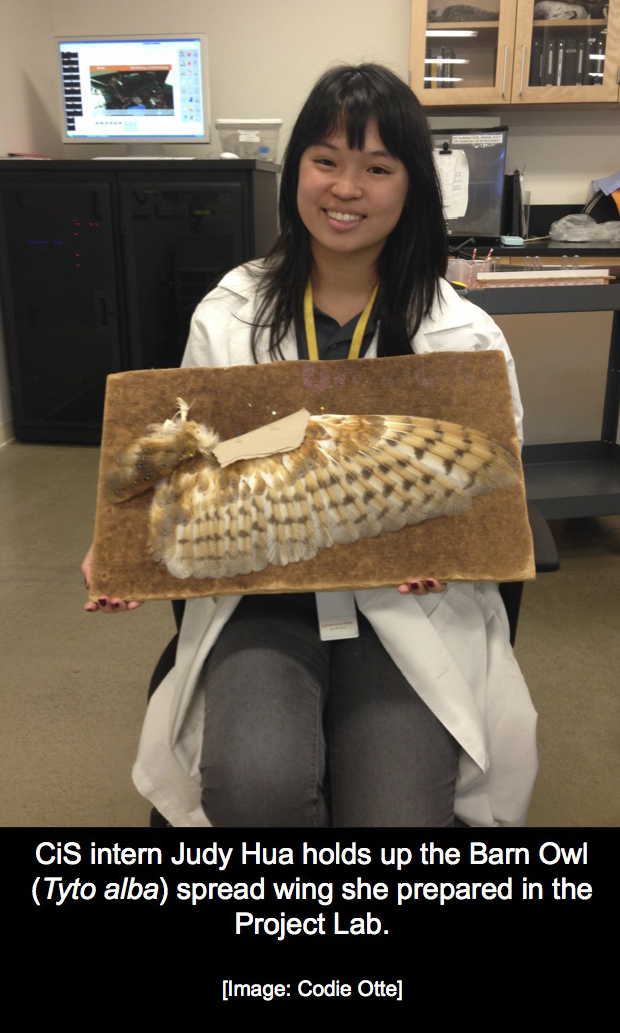
With over 140,000 specimens in the Ornithology and Mammalogy research collections, volunteers can be a great help in our collections. Volunteers are an integral part of the Academy of Sciences whether its docents on the public floor or curatorial volunteers numbering every bone in a tiny hummingbird skeleton. What some may not know is that the Academy also has a wonderful mentorship program through the Careers in Sciences intern program.
"Created in 1996, the Careers in Science Intern Program provides San Francisco youth from communities traditionally underrepresented in the sciences with opportunities to immerse themselves in the natural world, develop life and job skills, receive college and career mentorship, and learn science and sustainability concepts in an authentic, paid work environment. Through the mentorship program, interns have learned to prepare research specimens while up in the collective Project Lab.1"
Careers in Sciences interns Judy Hua and Jamarc Allen-Henderson have participated in the Ornithology and Mammalogy specimen preparation mentorship this spring preparing skeletons and spread wings. Skeleton preparation entails removing the skin, feathers or fur and muscle from the bones before soaking them in water (masceration) or putting them in the dermestid beetle colony to completely clean the bones. Check out the Project Lab’s previous posts to learn more about masceration and the dermestid colony! Skeletons can tell us a lot about what a bird or mammal ate, how it walked or even identify a new species! Spread wings are also important specimens that can show molt patterns in birds. Each of these specimens will be be given an individual catalogue number that distinguishes it from the others in the collection and increase our knowledge about bird and mammal populations.
 Judy and Jamarc have been busy flensing skeletons, adding to the Academy’s incredible collection of specimens.
Judy and Jamarc have been busy flensing skeletons, adding to the Academy’s incredible collection of specimens.
Judy Hua explained her favorite part of working up the Project Lab:
"Everyone sees the skulls after all the tissue is removed and the maceration is done, but no one really knows the process of it. And because we get to see the organism up close and personal, I've begun to notice all the beautiful, elegant parts of birds, like their different layers of feathers.
This is a part of science high school students never have really have the chance to experience. We dissect cow eyeballs if we're lucky but usually we’re rushed to finish. We can't stop and appreciate how amazing the specimen is. But in O&M, I can easily work my own pace and stop to appreciate the organism I'm dissecting. It shows you that science is a long process (which I love!)."
-Codie Otte, Curatorial Assistant/Specimen Preparator, Ornithology and Mammology
1. http://www.calacademy.org/careers-in-science-cis-intern-program
